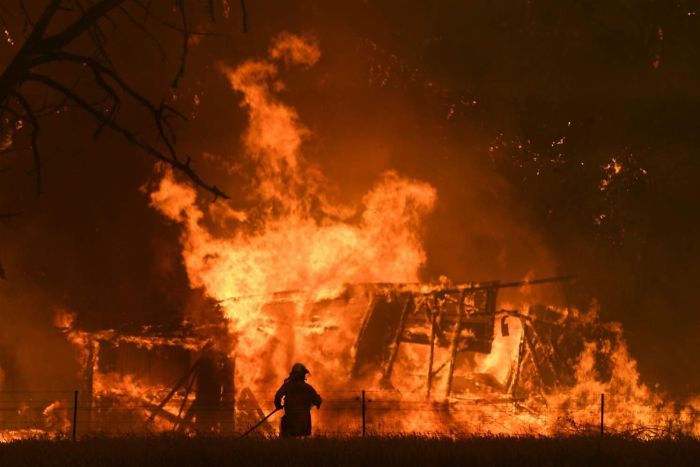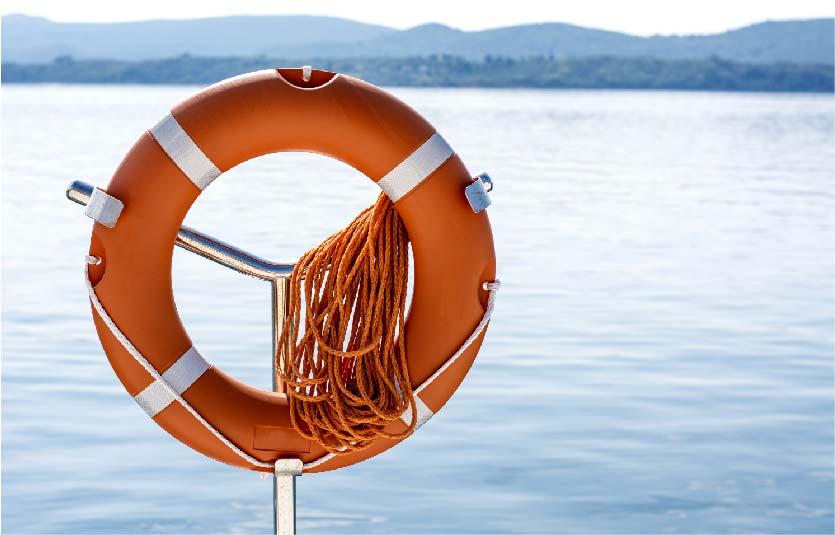The bushfires that have ravaged the Australian bush over the past several months have caused all of us around the country and overseas to take stock and empathise with those people directly affected. Although recent cooler conditions and rain has brought some respite, more than 50 fires are still burning in the states of New South Wales and Victoria. As hot weather patterns return to parts of New South Wales and in and around the Australian Capital Territory, the fires that remain in those areas are expected to worsen. At least 33 people have been killed including 4 fire fighters and more than 11 million hectares (110,000 km² or 27.2 million acres) of forests and parks across Australia have burned. To put this into context, some of the worse recent bushfires have been the Siberian fires of 2019 which burned 6.7 million acres, the Amazon fires of 2019 which burned 2.2 million acres and the Californian fires of 2018 which burned 2 million acres. It is now believed to have destroyed approximately 2000 homes across the country. One third of the vineyards in South Australia’s Adelaide Hills have been lost and in New South Wales, the massive Gosper Mount fire alone has burned more than 1.2 million acres making it the biggest forest fire in history. One study estimates that 480 million animals in New South Wales alone may have been killed. This figure includes only mammals, bird and reptiles and does not consider insects, bats or frogs. One area of unique habitat that has been decimated is Kangaroo Island which is renowned for its unique mix of animal species and there are fears it may never recover.
Further, the fires are estimated to have pumped approximately 500 million tonnes of CO2 in the atmosphere, roughly two thirds of Australia’s annual emission budget. The air in Canberra on 1 January 2020 was more than 20 times above hazardous levels, leading to a near total shut down of the city.
We have compiled here some things to consider when renewing your insurance which are relevant to both those potentially affected by bushfire. Some of the matters are relevant to all insurance policy considerations.
How can I prepare?
You should have a digital copy stored, on the Cloud, of your insurance information, photos and videos or lists of property that you have insured that will assist in defining what items are insured and should be reinstated in the event that you have to make a claim.
Do you have enough insurance?
According to Campbell Fuller of the Insurance Council of Australia, about 80% of insured property owners in Australia are probably under insured. You should consider a “safety net” to take into account increased costs of build relating to changes in building codes and a higher demand for building materials in areas affected by a natural disaster such as a fire. There are two types of home insurance, total replacement cover or sum insured cover. A sum insured cover policy will cover you to a set amount. Some of the worst clauses, allow insurers to base pay outs on the rates they can purchase materials for and labour at rather than the actual costs of rebuilding or repairing your home. It may be worth considering a total replacement policy, which will cover the total replacement cost. Alternatively, if you are looking at a sum insured policy, you should get some independent quotes from builders to inform you of how much you need to insure for. Whilst there is no typical pay out figure, the Insurance Commission of Australia is aware that in October, the Rappville bushfire resulted in 200 claims with insured losses estimated at $25 million and in March 2019, the Bunyip bushfires in eastern Victoria caused losses of $31.9 million with 432 claims received. It is anticipated that the current fires and monetary damage in Australia will be extensive. It is expected to exceed the record 2009 Black Sunday blazes which incurred losses of $4.4 billion. As most people are aware, the indirect economic cost relating to the fires is near on impossible to quantify.
Claiming
Do not be concerned if your policy documents have been lost or destroyed. Insurance companies kept records electronically and only require the policy holder’s name and address in order to process your claim. Your insurer is obliged to send you a copy and may have them available online for you.
One of the first things you should look for is whether you are covered for the costs of temporary accommodation and other initial immediate necessities. If you are returning to a fire ravaged area, it is important to have safety as your main priority but if it is safe to return, try to document with photos, invoices of costs you incur and any evidence of any costs that you incur in relation to the fire including travel to alternative accommodation or a loss of earnings issue if you work from home. You should not dispose of any items unless they have become hazardous.
It is important to read your policy closely as policies vary in wording as to the types of risk or insured events they will cover and what event or losses are excluded. Some common limitations are that for the first 48 or 72 hours in taking out the policy you are not covered. We saw some unprecedented steps during the recent Australian bushfires where both Suncorp and IAG, two of Australia’s biggest insurers, had a combined figure of 67 areas under embargo that they would not insure across Victoria and New South Wales. Other insurers had extended limitation periods that they would not cover for being for several weeks rather than the usual 48 to 72 hour exception of coverage. Other common limitations include damage from scorching, burn marks or melting that are not covered where there has been no flame or where there was no burning building within 10 metres of your home. The policy might also seek to exclude heat, soot, smoke or ash damage unless your building or contents have also caught fire. The extent of your cover will ultimately depend on the wording of your policy. Many policies also impose general obligations on you to take reasonable precautionary measures to prevent loss, for instance, clearing your gutters to reduce the risk of leaves in the gutter catching fire from embers carried by the wind and conducting appropriate fire breaks. It can be difficult at times to work out what is covered by your policy so if the insurer rejects any part of your claim, we strongly suggest you obtain advice.
Time for response
Generally, the insurer should make a decision regarding your claim within a maximum of 4 months unless exceptional circumstances apply when they can be allowed longer timeframes. The recent Australian bushfires are considered to be exceptional circumstances. Other exceptional circumstances include where there has been an extraordinary catastrophe or disaster declared by the Board of the Insurance Council of Australia. In these circumstances, the maximum time to make a decision on a claim is 12 months. You can complain to the Australian Financial Complaints Authority at any time if you are dissatisfied with either the response or the progress of your claim.
If you feel you have been clearly misled by your insurer in getting too little or too much insurance, you should get legal advice. If you relied on the insurer’s own sum insured calculator before taking out insurance, you should get legal advice.
Cash settlement or repair/replacement
Often, the insurer is entitled to make the decision as to whether to repair, replace or cash settle a claim. Sometimes they may ask how you would prefer to settle and you can try to negotiate. You should be very careful before accepting a cash settlement offer. You should take the following into account in your negotiations:
- If an insurer chooses to repair or rebuild, the insurer is responsible for the work. Insurer offer guarantees on the works they do.
- Get multiple quotes to make sure that the amount being offered is fair and realistic. Quotes that the insurance company obtain may not be actual costs to you to repair, rebuild or replace.
- In content claims, the insurer may pay your claim in store credit instead of cash. They can only do this if the policy contains an express right to do this. If the policy is silent on a store credit, you can ask for cash as an alternative.
Reviewing your claim after a catastrophe
The General Insurance Code of Practice states that if you have a property claim resulting from a bushfire that is finalised by your insurer within one month of the bushfire but you believe the assessment of your loss was not complete or accurate, you may ask your insurer to review your claim up to a year after finalisation even if you signed settlement or release papers.
Pets
Some home and contents insurance policies cover vet bills if your pet is injured either due to an insured event or an accidental injury. Depending on your policy, you can claim usually between $500 to $2,000 for vet bills. Some companies offer this cover as an optional extra so you should check with your insurer. Alternatively, if you have a pet insurance policy with injury cover, it will cover your pet for burn injuries and smoke inhalation.
What if you cannot go home?
Your home insurance policy often includes cover for accommodation if your home is uninhabitable after an insured event. Depending on how long you need to be away from your home, this might be hotel accommodation or a longer term rental home similar to your own. Depending on the policy, the amount you can claim will be often 10 – 20% of your building sum insured, 12 -24 month’s rent for an equivalent property or whichever is less. State and Federal Governments also give financial assistance to people affected by natural disasters. Some insurers also include $500 to $2,000 cover for replacement of refrigerated food and medication. You might be able to claim this if your power was cut out due to a bushfire even if your property was not directly affected by it.
Architects, Surveyors and Legal fees
A lot of home building insurance policies provide additional cover for the costs of the services of architects, surveyors and legal fees in rebuilding and/or repairing damage to buildings. If you are unsure whether you are covered for these, check to see if you have a clause in your policy similar to the following:
“Will pay the reasonable costs of architects, surveyors and legal fees when damage or loss occurs. We will pay up to 10% of your building sum insured”
Urgent financial need
The General Insurance Code of Practice obliges your insurer to fast track your claim if you are in urgent financial need (Clause 7.7(a)) and to make an advance payment within 5 business days of you satisfactorily demonstrating your urgent financial need (Clause 7.7(b)). Any advance payment will be deducted from the total value of your claim.
Do you have a mortgage or other loans?
You should contact your lender immediately to ask for hardship assistance. This is most commonly provided in the form of reduced or postponed payments usually for 3 – 6 months at a time. When catastrophes such as the current bushfires happen, some lenders may offer even more generous assistance and you should explore that avenue as well. If you do nothing, this could result in a legal claim being lodged against you.
If you have a mortgage over your home that has been damaged or destroyed, the insurer may pay the amount of your claim directly to your home lender.
Complaints
If you have any complaints in relation to a claim, there are several methods of advancing that. One is the insurer’s internal dispute resolution department, second is making a complaint to the Australian Financial Complaints Authority, the third is that you can consider court proceedings. You can get free assistance from the Insurance Law Service on 1300 663 464 Monday – Friday between 9:30am and 4:30pm AEDT. You can alternatively contact Lynn and Brown for detailed assistance. We have extensive experience in advising on, reviewing and disputing insurance policies.
In this, we acknowledge information obtained from the Financial Rights Legal Centre and news articles by BBC, the World Economic Forum, the ABC and the Guardian for the creation of this article. Photo credit: AAP Dan Himbrechts
About the author:
This article has been authored by Steven Brown who is a Perth lawyer and director at Lynn & Brown Lawyers. Steven is a Perth lawyer and director, and has over 20 years’ experience in legal practice and practices in commercial law, dispute resolution and estate planning.
















